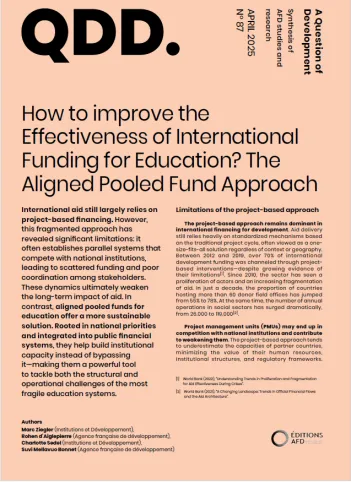Share the page
How to improve the Effectiveness of International Funding for Education? The Aligned Pooled Fund Approach
Published on

International aid still largely relies on
project-based financing. However,
this fragmented approach has
revealed significant limitations: it
often establishes parallel systems that
compete with national institutions,
leading to scattered funding and poor
coordination among stakeholders.
These dynamics ultimately weaken
the long-term impact of aid. In
contrast, aligned pooled funds for
education offer a more sustainable
solution. Rooted in national priorities
and integrated into public financial
systems, they help build institutional
capacity instead of bypassing
it—making them a powerful tool
to tackle both the structural and
operational challenges of the most
fragile education systems.
Useful Information
-
Authors
-
Marc Ziegler, Charlotte Sedel , Suivi Mellavuo Bonnet
-
Edition
-
87
-
Number of pages
-
4
-
ISSN
-
2271-7404
-
Collection
-
A Question of Development
-
Other languages
